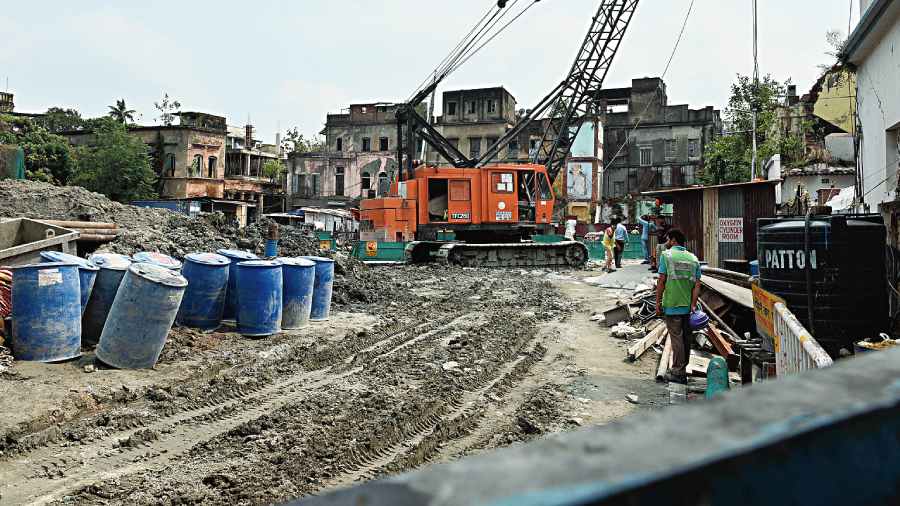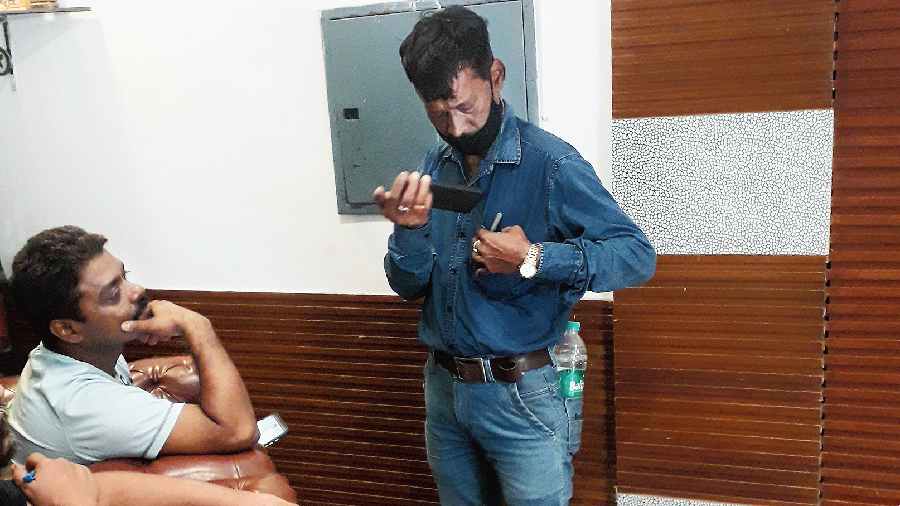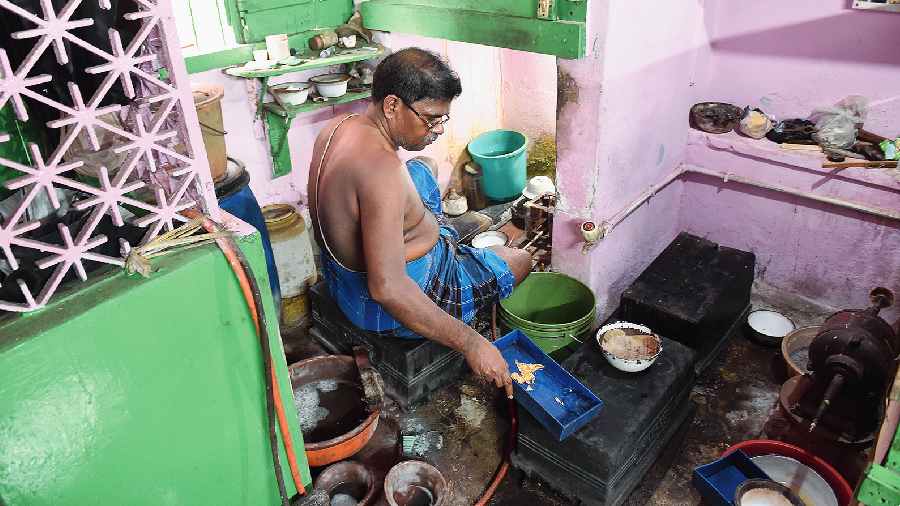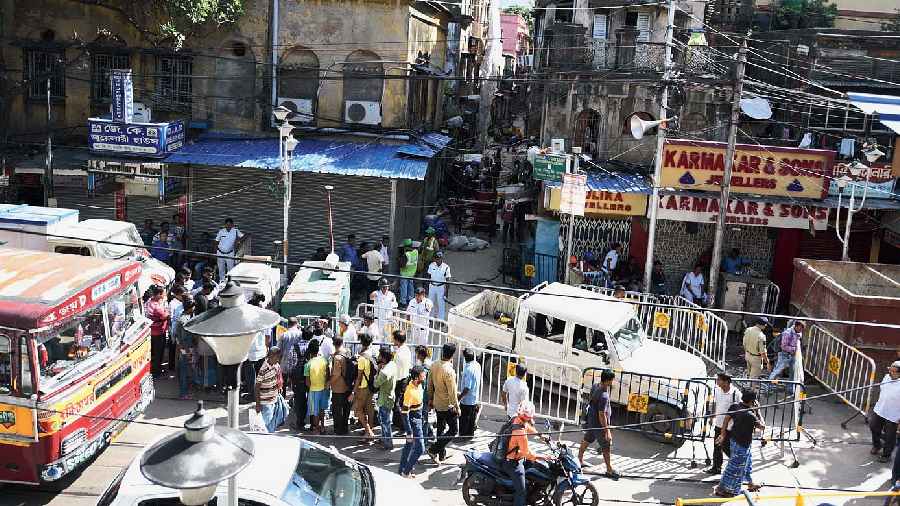East-West Metro construction between Esplanade and Sealdah has been stalled for an indefinite period following the latest accident, pushing the already much-delayed project further back.
On Friday, Kolkata Municipal Corporation (KMC) sought a series of reports from Kolkata Metro Rail Corporation (KMRC), the implementing agency of the 16.5km project, which will link Howrah Maidan and Salt Lake Sector V once fully operational.
A team of experts, including professors from the civil engineering department of Jadavpur University, will go through the reports before preparing a comprehensive report that will be submitted to the state government.
Based on that report, a meeting chaired by the chief secretary is supposed to chalk out a road map for the project, government sources said.
The work at the Bowbazar site has stopped for now, said KMRC officials. It is unlikely to resume before the meeting at Nabanna, sources in the agency said.
Excavation of soil to grout a “blind spot” under the Howrah-bound tunnel of East-West Metro led to leakage of underground water that in turn caused subsidence and cracks in at least nine buildings near Bowbazar on Wednesday.
The cracks have displaced 141 people, the second time in less than three years.
On Thursday, C.N. Jha, the managing director of KMRC, had said that the latest accident in Durga Pituri Lane in Bowbazar should not delay the project by more than “two to three months”.
On Friday evening, Jha said: “We will provide the information sought by the civic body within a couple of days. Experts from Jadavpur University will examine the reports. We are fully cooperating with the civic body. After work resumes, it should not take more than two to three months to complete the remaining work in the retrieval shaft site. But it is tough to say when the work will resume.”
Another KMRC official said even after work resumed, there was no surety that this kind of disaster would not happen again. “We will take all safety precautions and hope this will not happen again,” said the official.
The leakage of water that triggered the latest accident had been completely arrested on Thursday night, the KMRC said in a formal communication.
KMC officials met KMRC representatives at the civic body’s headquarters on Friday evening. The meeting, chaired by mayor Firhad Hakim, included experts from Jadavpur University.
The following reports have been sought from KMRC:
- soil survey report
- build and design report
- soil settlement monitoring report
- grouting and post-grouting report
- buildings’ (in the vicinity) health report
“Our engineers and experts from JU will prepare a detailed report after going through the information provided by KMRC. After the detailed report is ready, there will be another meeting at Nabanna,” said Hakim.“The soil survey report is especially important to assess the safety of the underground tunnels.”
The area from where water started leaking on Wednesday was deep inside a retrieval shaft from where the two tunnel boring machines were pulled out. The shaft is around 38m in length.
The gap is gradually being filled by building a reinforced concrete structure inside it. Construction of 29m had been completed before the accident.
To arrest the leakage of water, large volumes of concrete were used to plug the gaps.
Now, the large mass of concrete deposited at the site will have to be removed before work on the remaining stretch begins, said KMRC officials.
Engineers involved in the project said once the concrete structure — linking the two tunnels — is built inside the shaft, there should not be any possibility of water leakage.
But it is impossible to guarantee that further leakage will not happen in the course of the construction of the remaining nine metres, they said.
“We will put additional safety measures in place. Before excavation starts, we will do extensive grouting to increase the density of the soil and make it as impervious as possible,” said N.C. Karmali, director (projects), KMRC.



